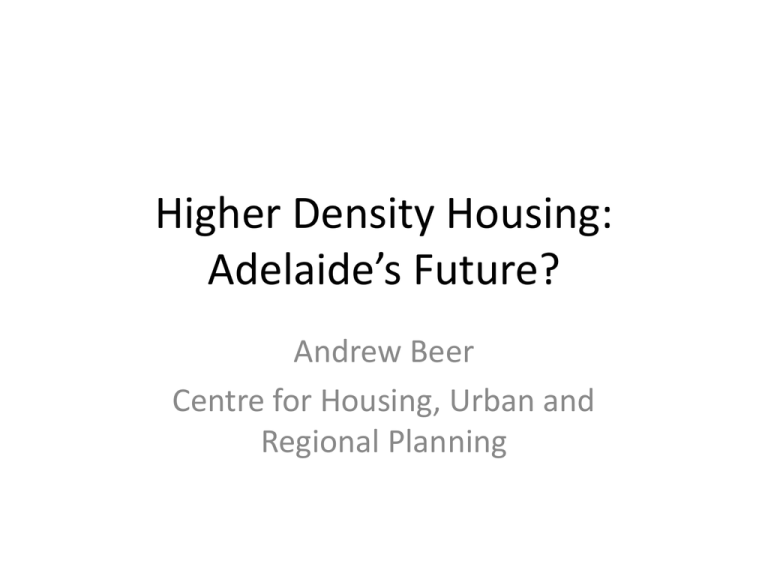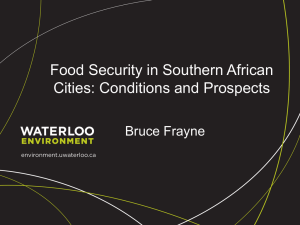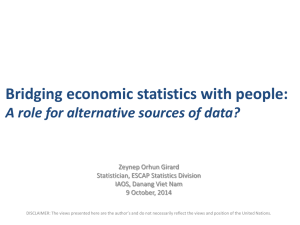Higher Density Housing: Adelaide*s Future?
advertisement

Higher Density Housing: Adelaide’s Future? Andrew Beer Centre for Housing, Urban and Regional Planning Agenda • • • • The Demographic Imperative The Affordability Imperative Industry Structure and Process Outcomes The Demographic Imperative Changed Life Histories, Change Housing Transitions Number of Australian Households Resident in Flats and Semi Detached Dwellings, 1996-2006 1,000,000 900,000 800,000 Households 700,000 600,000 500,000 400,000 300,000 200,000 Flat, Unit or Apartment 100,000 Semi Detached, Row or Terrace House 0 1996 2001 Census Year 2006 Household Type Where Children are Defined as Dependents Under 24 Years, 1996, 2001 and 2006, Australia 2500000 1996 2001 Number of Households 2000000 2006 1500000 1000000 500000 0 Lone person household Group household Multi-family household Lone parent Lone parent Couple family Couple family household w ith household w ith household w ith household w ith dependents 24 no dependents dependents 24 no dependents and under 24 and under and under 24 and under Household Type Other family household Household Type Where Children are Defined as Dependents Under 15 Years, 1996, 2001 and 2006, Australia 3000000 Number of Households 1996 2001 2500000 2006 2000000 1500000 1000000 500000 0 Lone person household Group household Multi-family household Lone parent Lone parent Couple household household family with children with no household under 15 children with children under 15 under 15 Household Type Couple family household with no children under 15 Other family household The Affordability Imperative Tenure Across Australia, 1991, 1996 and 2006 Number of Households in the Bottom 40 Per Cent of the Income Distribution Paying 30 Per cent or More for their Housing % of Households in the Bottom 40 Per Cent of the Income Distribution Paying 30 Per cent or More for their Housing Number of Households in the Top 60 Per Cent of the Income Distribution Paying 30 Per cent or More for their Housing % of Households in the Top 60 Per Cent of the Income Distribution Paying 30 Per cent or More for their Housing 25 Percentage of Households 20 Number of Upper Income Purchasing Households Number of Upper Income Tenant Households 15 10 5 0 1996 2001 Census Year 2006 Industry Structure and Process Industry Structure, Adelaide and Sydney 2006 20 18 16 14 12 10 8 6 4 2 0 Adelaide Sydney Outcomes Top 20 SLAs to Record an Increase in Households Resident in Buildings Four or More Storeys High, 1996 to 2006. Statistical Local Area Sydney (C) - South Melbourne (C) - S'bank-D'lands Sydney (C) - West Melbourne (C) - Inner Sydney (C) - East Sydney (C) - Inner Melbourne (C) - Remainder Port Phillip (C) - West Broadbeach-Mermaid Beach Rockdale (C) North Sydney (A) Willoughby (C) City – Remainder (NSW) Auburn (A) Kangaroo Point Sutherland Shire (A) - East Port Phillip (C) - St Kilda Canada Bay (A) - Concord Adelaide (C) 2006 11,921 8,353 11,262 7,360 17,511 8,429 9,462 6,834 3,352 5,939 13,343 6,548 2,832 2,733 2,476 5,294 3,507 1,824 1,674 1996 3,761 608 4,170 896 11,283 2,373 3,587 1,799 138 2,790 10,247 3,766 88 177 123 3,111 1,567 62 3 Difference 8,160 7,745 7,092 6,464 6,228 6,056 5,875 5,035 3,214 3,149 3,096 2,782 2,744 2,556 2,353 2,183 1,940 1,762 1,671 Impediments and Challenges • Families and higher density housing – Children falling from height – Access to play space – Cultural preference/usability of open space • Cost of land – Radford et al 2003 • Cost of construction – Gratten Institute estimates building and construction one of the most ‘protected’ industries in Australia • Tax system – Reinforces preference amongst small scale investors for detached dwellings • Strata title and strata title management costs • Planning regulation/government housing policy Key Drivers • On going strength in education sectors • Higher energy costs • Shifting industry structure – Services • Ageing of the population • Population growth






